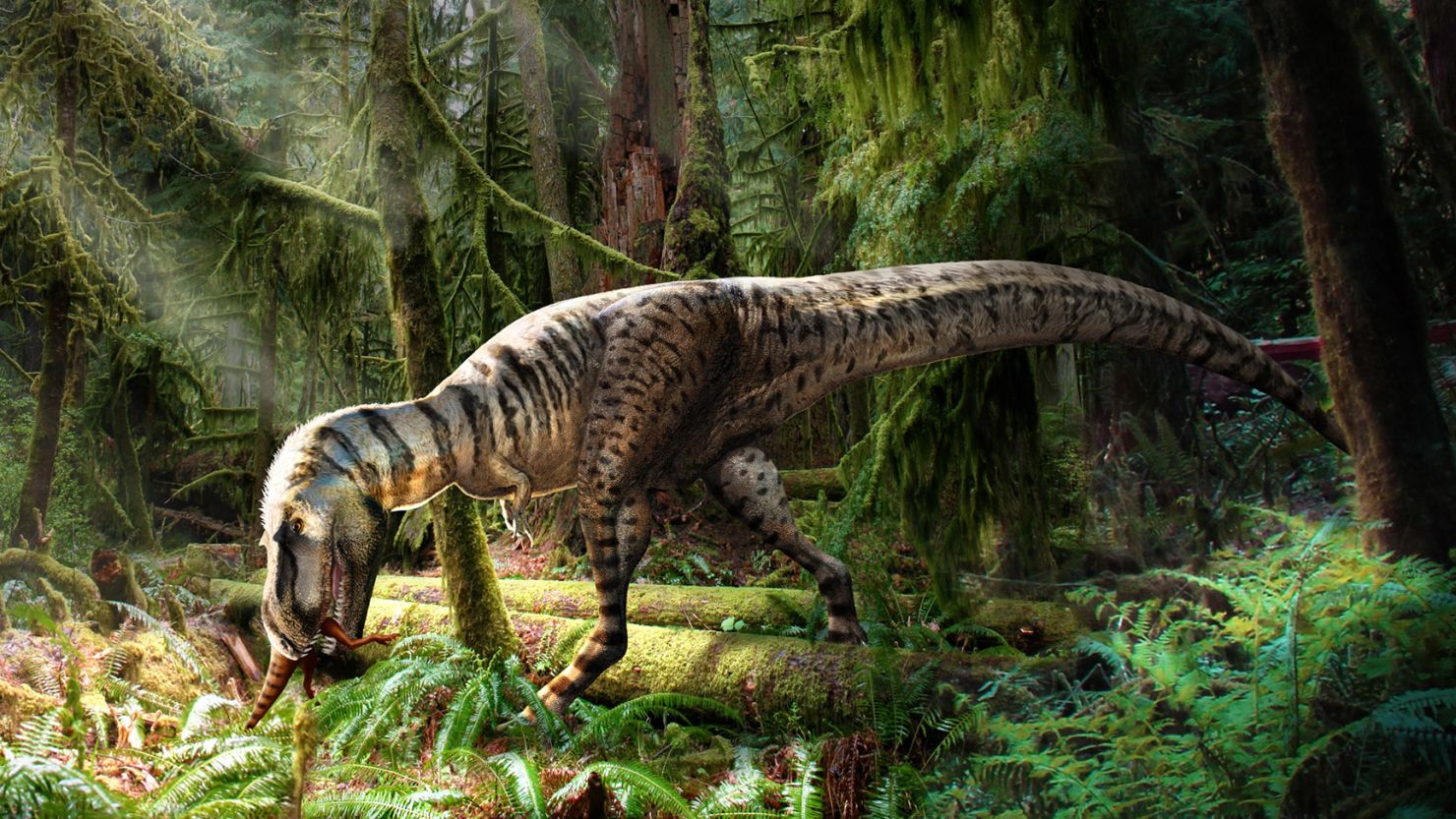"Tyrannosaur's First Meal Revealed: A Taste for Drumsticks"

December 8, 2023
The quality of this article has undergone Science X's editorial procedures and guidelines. The credibility of the content has been confirmed by:
- being fact-checked
- published in a peer-reviewed publication
- commendation by a trustworthy news agency
- proofread
by Daniel Lawler
Scientists have discovered prey contained inside the stomach of a tyrannosaur skeleton for the first time, suggesting that young dinosaurs had a preference for 'drumsticks'.
The tyrannosaurid family member, Gorgosaurus shed light on how they grow from somewhat slender juveniles into massive, bone-crushing and apex adults.
The 'dreadful lizard' Gorgosaurus was approximately six years old when it died over 75 million years ago. This discovery was made in the most recent study published in Science Advances journal.
The discovery was made in 2009 in the Dinosaur Provincial Park, to the east of Calgary, Canada. However, the researchers found something unusual when the skeleton was further examined in the lab.
Francois Therrien, the study lead from Royal Tyrrell Museum, told AFP they were astounded 'to find the last meal still preserved in this young tyrannosaur.'
Shockingly, the tiny skeletal leg remains extruding from the tyrannosaur's ribcage belonged to Citipes, two young bird-like dinosaurs.
Citipes were thought to be feathered, winged, and beaked dinosaurs that walked on two feet, slightly resembling today's cassowaries, according Therrien.
However, this size is significantly smaller compared to large herbivorous dinosaurs that adult tyrannosaurs are known to consume.
Darla Zelenitsky, the study's co-author from the University of Calgary, told AFP, this specific dinosaur used its sharp teeth to carve only the legs off the two baby Citipes. 'This teenage Gorgosaurus had a preference for drumsticks' she stated.
This discovery adds insightful information about how tyrannosaurs transformed from a meter-long at birth into gigantic predators.
'This fossil is the first hard proof that tyrannosaurids dramatically changed their diet during their growth process from teenagers to adults,' Zelenitsky pointed out.
The young tyrannosaurs appearance consisted of slender heads, legs and sharp knife-like teeth for scavenging carcasses, with potential fast speed to catch their turkey-like preys.
The youths probably looked more akin to the 'Jurassic Park' velociraptors than the Goliath T-Rex, suggested Zelenitsky.
Nonetheless, they underwent a tremendous transformation around 11 years of age going from 1 meter long to weighing more than 3,000 kilograms.
Their heads became broader, and teeth thicker, evolving into what Therrien referred as 'killer bananas', capable of gnarly bone crunching.
The tyrannosaurs altered their diet from the drumstick-like meals of their adolescence to preying on colossal herbivorous dinosaurs as they matured.
This type of considerable dietary shift is not uncommon–crocodiles and Komodo dragons shift from eating insects to preying on rodents and eventually larger mammals, clarified Therrien.
The study supports the theory that young tyrannosaurs filled the position of 'mesopredators' in the food chain before becoming apex predators.
This transition is 'likely the rationale behind the tyrannosaurs' success and their ecosystem domination during the end of the Cretaceous period in North America and Asia' according to Therrien.
Journal information: Science Advances
© 2023 AFP




